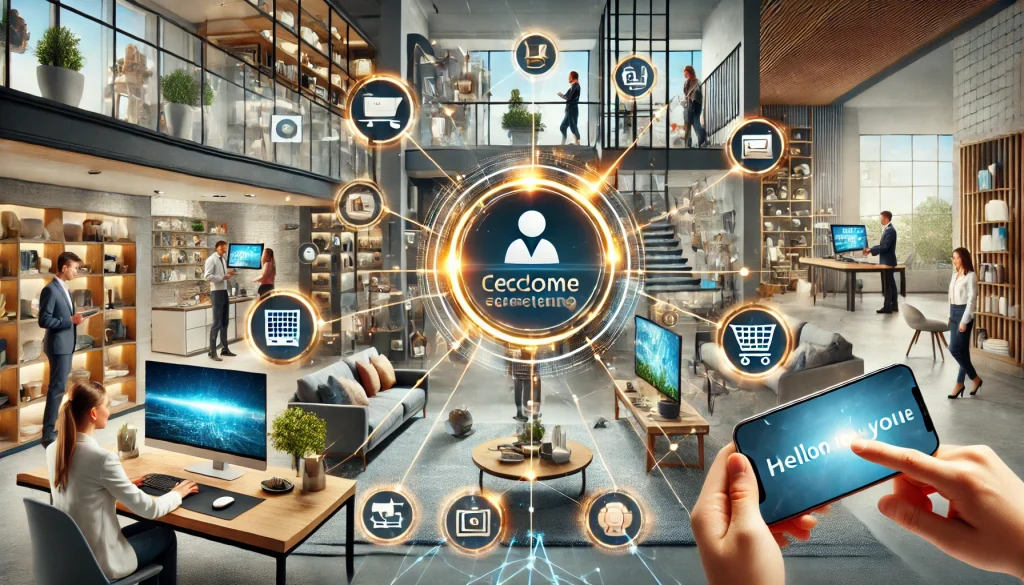You never get a second chance to make a first impression.
Will Rogers was on to something when he said that, and we think the theory applies to customer greetings.
For customer service providers, first impressions set the whole tone for the conversation. A warm, sincere customer greeting will make a positive first impression and dissipate the customer’s apprehension.
There are a few key factors that make for a good first impression and a great customer greeting. With the appropriate mix of timeliness, clarity, recognition, and confirmation, customer service agents can set the stage for positive customer experiences.
An effective customer greeting should help to identify the customer’s needs, which can set the stage for making a sale. Greeting customers can change depending on the different channels you offer for customer support. Having an omnichannel support approach is great, but it is important to understand how different channels require different greeting finesse.

We’ve got the perfect guide to navigating customer greetings across a multichannel strategy so your team can make the best first impression, no matter what channel customers use to communicate with you.
Tips for Omnichannel Customer Greetings
While omnichannel customer support strategies may cover many different communication channels, the tips we set forth can be adapted by any other channel your team may use to help support your omnichannel strategy.
Timeliness
Your customers need answers, and they need them quickly! The longer customers have to wait for their answers, the less likely they are to purchase from you. While they’re waiting for you to respond, they’re off doing their own research and speaking with more responsive companies.
Depending on how your customers choose to communicate with you determines the average time they are willing to wait for a response. Email, for example, allows for a longer wait period. On average 60% of customers are willing to wait two days, where 52% expect a response within 24 hours. (MarketWatch)
Phone communications also allow for some wait time. Sometimes there might be a hold period until there is another available agent, or for smaller businesses, they are prompted to leave a message. According to Velaro, only 60% of customers are willing to wait 60 seconds before hanging up.
Live chat is a great tool to use, but only if you are responsive. Customers who use live chat expect an immediate response, within mere seconds.
Timeliness might be the most important factor to focus on, which is why we listed it first. If you’re going to take anything away from this guide, it’s this: DON’T MAKE YOUR CUSTOMERS WAIT! Longer wait times usually result in a negative experience for the customer and discourages them from continuing to use your company.
If timeliness is something your team struggles with, there are some techniques that you can use to try and alleviate customer frustration.
- Communicate with the customers. Give them an honest estimation of how long they might have to wait.
- Give them options. Suggesting a callback request or alternate communication channel can allow customers to have more control of the situation, and allow them to make an alternate decision that might have a quicker response time.
Clarity
Everyone communicates differently. Because of this, it’s imperative that customer support agents are clear in how they are communicating with customers. This means using simple terminology and confirming an understanding of issues and solutions with customers.
The importance of clarity goes beyond understanding. Clarity in communication improves connection and engagement, improving trust and transparency. (ArtfulThinkers) Clear and concise communication is the key to empowering others to take action. Your support agents should want customers to trust you. Agents should be building strong relationships with customers at all times, and clarity is the glue to make that relationship strong.
“Clarity is power.” Tony Robbins
Clarity can be one of the harder factors to improve upon because it takes more than one person to practice. While the agent communicating might think he or she is being clear, the customer on the other end of the line might think otherwise.
Some tips for creating clarity in communications include with
- Having concise messaging. This improves connection as being brief provides less of a chance for confusion.
- Be specific with your communication. Dictating specific actions, expectations, instructions, or next steps will help the customer being communicated with have a clear understanding of what to do.
Finally, keep it simple. Using hyperbole and jargon can muddy the message an agent is trying to send. Keep the work choice common and understandable to avoid misunderstanding.
Recognition & Confirmation
The final tip to share is a two-parter! Recognition and confirmation go hand in hand for customer support agents. When we are communicating with each other, it is important that each party recognizes the conversion and shows understanding with a confirmation.
As an agent, it is your job to recognize the issue the customer is having so you can find a solution. Before you reach a solution, however, the customer should confirm that yes, that is the issue they are facing.
For example, a recognition/confirmation conversation might go like this:
Agent: “Hi Steve, my name is Amy. How can I help you today?”
Customer: “Hi Amy, I can’t seem to access my account. Can you help?
Agent: “Of course. So just to understand, are you having trouble logging in? Or is there something wrong within your account?
Customer: “No, I can’t seem to log in. I’ve entered my email and possible passwords but no luck.
Agent: “That’s frustrating, but I can absolutely help you to log into your account. May I have the email address you are trying to access the account with?
In this exchange, the blue highlight is Amy (the agent) identifying and recognizing the specific problem the customer has. Steve, (the customer) wasn’t specific in his initial response, so it was Amy’s responsibility to ask qualifying questions to recognize the problem.
The orange highlight is pointing out Amy’s confirmation of the issue. The importance of this is to have a mutual understanding. If Steve said “No, I can’t seem to log in” but what he really meant was that he can’t view his account balance, then Amy wouldn’t be solving his immediate problem. By reiterating and confirming his issue, Amy and Steve can come to a solution more quickly.
We can thank Ron Swanson for this additional example:
Omnichannel Customer Greetings

Now that we know some tips for our customer support greeting and conversations, we can talk about the greetings themselves! There are three components to great customer service greetings: an opener, and introduction, and an invitation.
Opener
Your opener should be warm and welcoming. Something as simple as “Hello” is a good way to start the conversation.
Some great examples of openers are:
- Good Morning/ Afternoon
- Thank you for calling/contacting XYZ
- Hello, you’ve reached XYZ
If your company has a special or unique greeting, like “Joe’s crematorium. You kill ’em, we grill ’em“ make sure to say it clearly so customers can understand.
However, you choose to answer your different customer queries, make sure you’re always friendly and welcoming. Starting the conversation on a positive note will help to set the tone for the rest of the conversation.
Introduction
After your opener, you should introduce yourself so customers know who they are talking to and can reference the conversation later if needed. Introducing yourself by name is a great way to make the conversation more personal.
In addition to offering your name, asking the customer’s name is a great way to further build the relationship. It allows the agent to call the customer by name thus building trust with the customer and offering a sense of ease and comfort.
You can say:
- Hello, thank you for contacting XYZ. My name is Amy. Who do I have the pleasure of speaking with?
- Good morning, you’ve reached Steven, your customer service rep.
- Thank you for calling XYZ customer support line. My name is Bryn, who am I speaking with?
Invitation
The final part of your greeting should be the invitation or the reason for their calling.
Asking questions like these opens the door for customers to explain their problems.
- How can I help you?
- What is the reason you’re contacting us?
- I see you filled out a complaint form, what seems to be the problem?
If the communication channel requires a subject selection, like live chat or email, the agent knows right away the reason the customer is contacting the company. You can incorporate this into your invitation by saying “…I see you’re having trouble with your account access. Can you elaborate for me?” This invitation incorporates recognition and confirmation is the customer’s problem, making you (the agent) look well versed in customer support. Additionally, for a more personalized touch, consider attaching a visually appealing invitation created effortlessly with photoADKing’s invitation card maker to enhance the overall customer experience.
Overall, as the agent, YOU are in control of starting the conversation on a positive not and making sure the communication is effective. Starting with a greeting that combines a positive opener, introduction, and invitation offers a sense of comfort to the customer. Throughout the conversation, your communication should be timely, clear, and portray recognition and confirmation of the customer’s problems. Following these tips will help your team of customer support agents have effective conversations with customers across all channels of your omnichannel customer support strategy.




